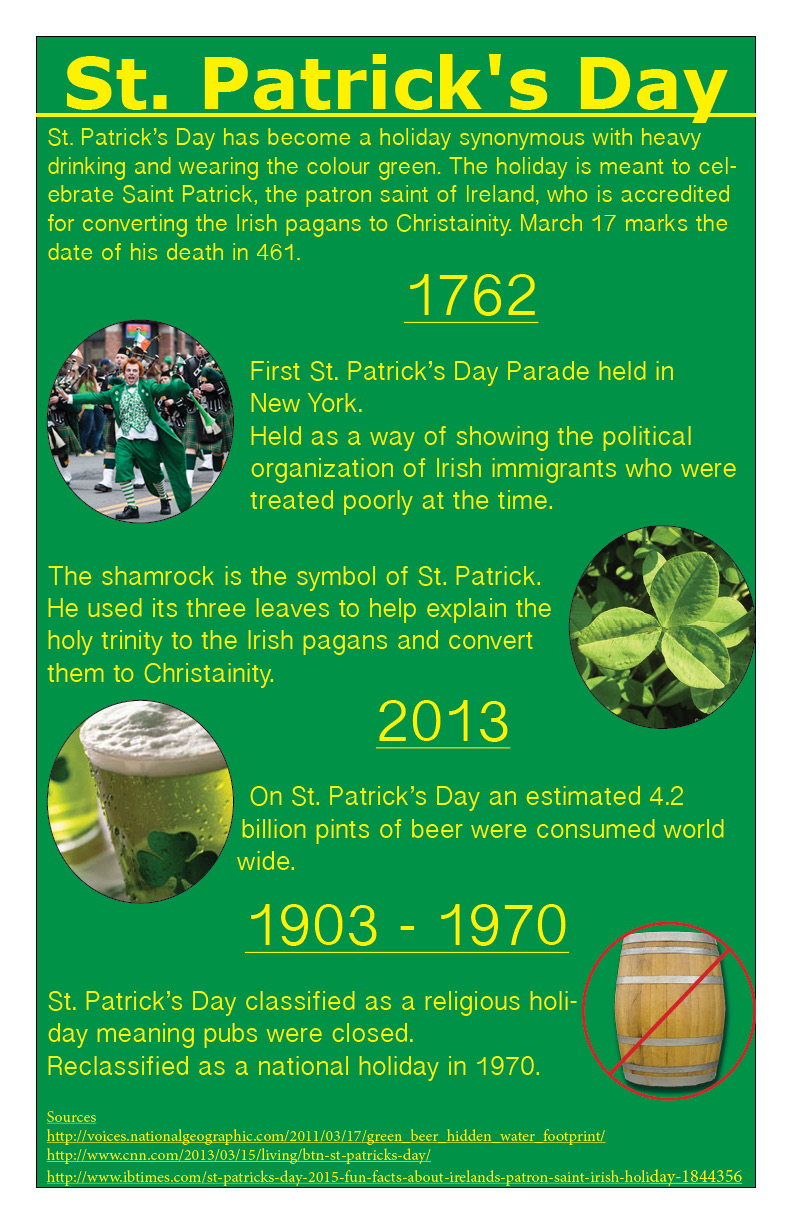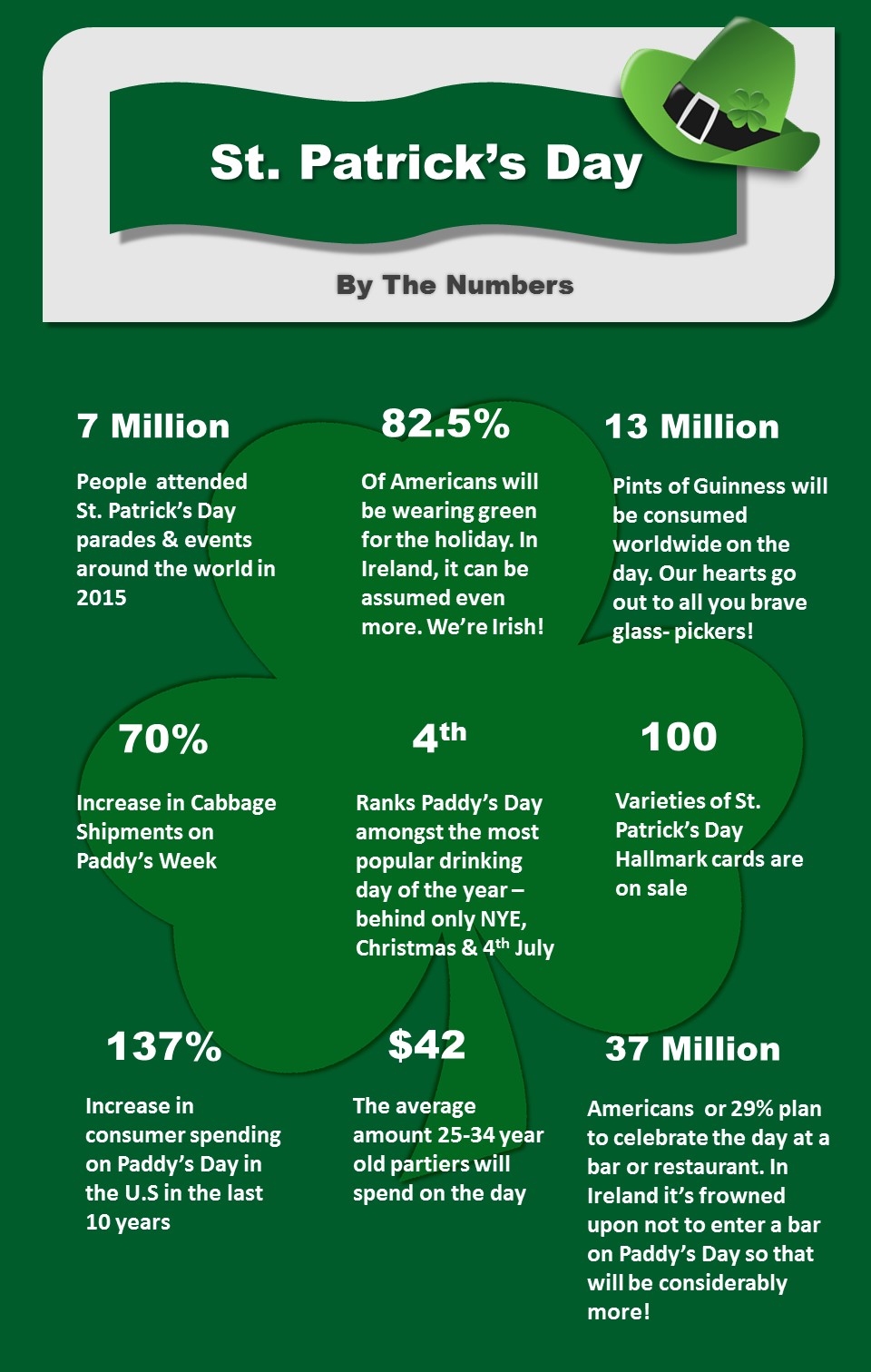Gallery
Photos from events, contest for the best costume, videos from master classes.
 |  |
 |  |
 | |
 |  |
 |  |
 |  |
At Springpoint, we’re all about celebrating life and learning something new every day, so we’ve gathered 10 fun and surprising facts about Saint Patrick’s Day to share with you. Grab a cup of tea (or a pint of Guinness!) and let’s dive in! 10 Fun Facts About Saint Patrick’s Day: 1. Saint Patrick Wasn’t Irish. New York City and the First St. Patrick’s Day Parade One of the earliest St. Patrick’s Day celebrations in America took place in Boston in 1737, when a group of Irish Protestants gathered to The 200 th anniversary of St Patrick’s Day was marked in Sydney Opera House by making it green. 17. The first St Patrick’s Day celebration in the United States was held in Boston in 1737. Dyeing of the Chicago river on Saint Patrick’s day. Image credit – berni0004. 18. On this day, people usually eat corned beef and cabbage, and they For many years, St. Patrick’s Day was considered a more solemn, religious occasion in Ireland, and all pubs were closed for the day. 7. Ireland’s First St. Patrick’s Day Parade Wasn’t Until 1903. While St. Patrick’s Day has been celebrated for centuries, the first parade in Ireland didn’t happen until the early 20th century. 7. What mythological being is a part of St. Patrick's Day lore and Irish culture? Answer: Leprechauns . 8. Where was the first St. Patrick's Day parade in Ireland held in 1903? Answer: Waterford St. Patrick’s Day was recognized by the Vatican as an official feast day in 1631. [4] In the latter part of the 19th century, Irish high society celebrated St. Patrick's Day at a grand ball held at the castle in Dublin. [4] St. Patrick’s Day was declared a public, rather than religious, holiday in Ireland in 1904. [4] St. Patrick’s Day, celebrated on March 17 each year, is known for its parades, shamrocks, and a whole lot of green. It’s a day when people around the world embrace Irish culture — whether they have Irish heritage or not. But behind all the revelry, St. Patrick’s Day has a deep and fascinating history that goes far beyond the modern celebrations. Some of the traditions we associate with While there are many mythical stories associated with St. Patrick’s day, there are some really cool and interesting St. Patrick’s Day facts as well!. We bet this amazing list of 29 St. Paddy Day fun facts will baffle you and have you pondering how much you really know about the holiday. St. Patrick’s Day: History, Traditions & Fun Facts St. Patrick’s Day is one of the most widely celebrated cultural and religious holidays around the world. What started as a solemn feast day in honor of Ireland’s patron saint has transformed into a global festival filled with parades, music, dancing, and a whole lot of green. Saint Patrick's Day Symbols. Symbols play a big role in Saint Patrick's Day celebrations. Each has its own story and significance. The Leprechaun's Pot of Gold: According to folklore, leprechauns hide their pots of gold at the end of rainbows. The Harp: The harp is a symbol of Ireland and is often associated with Saint Patrick's Day. Until the 1970s, Irish law required pubs to close on Saint Patrick’s Day, making it a more solemn occasion. Celebrating Saint Patrick’s Day Together. Saint Patrick’s Day is a joyous celebration that blends history, culture, and fun. St. Patrick’s Day brings communities together to enjoy shared traditions. Whether you’re attending a parade, searching for a lucky charm, or sharing a meal with friends, this holiday unites us all. Discover 10 surprising facts about St. Patrick’s Day that might just amaze you! 1. St. Patrick Wasn’t Actually Irish The first St. Patrick’s Day parade was not in Ireland but in St. Augustine, Florida, in 1601. The modern large-scale St. Patrick’s Day parade tradition started in New York City in 1762. Chicago dyes its river green every St. Patrick’s Day, a tradition that started in 1962. March 17 is primarily known worldwide as St. Patrick’s Day, the vibrant celebration that honors Ireland’s patron saint and cultural heritage. On March 17th annually, St. Patrick’s Day is celebrated globally with vibrant parades, lively festivals, and the widespread tradition of wearing green attire. This is one of the few St. Patrick’s Day facts that I did know..! The largest St. Patrick’s Day parade in the world takes place in New York City. The parade attracts a staggering two million+ people every year. 4. Ireland’s first parade. The very first St. Patrick’s Day in Ireland was held in County Waterford in 1903. 5. A national holiday 2. St. Patrick’s Day is not the Saint’s Birthday St. Patrick’s reported gravesite in County Down, Ireland. Source: Wikimedia Commons In reality, it is the opposite. St. Patrick’s Day celebrates the saint’s feast on the supposed day of his death in 462 CE. He was buried outside the cathedral in Downpatrick, County Down, Northern Ireland. The first St. Patrick’s Day parade was held in New York City in 1762. New York’s St. Patrick’s Day parade starts at 11:00 am sharp at St. Patrick’s Cathedral and up fifth avenue. And, now, as they say, the rest is history. America celebrates St. Patrick’s day with more vigor than Ireland! 9. St. Patrick’s Day is One of the Biggest Global Celebrations. The worldwide spread of St. Patrick’s Day was partially due to the 1845’s Great Potato Famine that forced more than a million Irish to emigrate. Today, more than 200 countries celebrate it. 10. St. Patrick’s Day Was Once a Dry Holiday St. Patrick’s Day isn’t just about wearing green and celebrating with parades—it’s packed with history, traditions, and surprising facts! Here are 15 fun St. Patrick’s Day facts to impress your friends and boost your holiday spirit. 1. St. Patrick Wasn’t Irish Believe it or not, St. Patrick was born in Roman Britain, not Ireland! He 13. The city of Montreal has one of the longest-running and largest St Patrick’s Day parades in North America, which have been occurring since 1824. 14. St Patrick’s Day facts: Saint Patrick used a shamrock
Articles and news, personal stories, interviews with experts.
Photos from events, contest for the best costume, videos from master classes.
 |  |
 |  |
 | |
 |  |
 |  |
 |  |